#Draw Wire Position Sensor
Explore tagged Tumblr posts
Text
How Draw Wire Position Sensors Are Transforming Robotic Systems
Learn how draw wire position sensors improve robotics with precise motion tracking, real-time feedback, and versatile applications in automation and industrial systems.
0 notes
Note
Also unrelated to the ask game but related to tango; I mostly know about them through your tags and I have gathered that they’re basically haunting a suit of power armour/IS the power armour, right? Please tell me at some point they can scare the shit out of someone by taking their helmet off and revealing an empty husk like in full metal alchemist it would be so fucking funny
@sirmanmister
BASICALLY YEAH!! they are quite secretive about their identity as no longer human, so don't do things like that on purpose very often, that said they are absolutely batshit enough to risk identity to scare some fools ahhaha They have also accidentally spooked Hancock while he was tripping, Tango had a variety of exterior panels removed for repairs including the helmet. they also had their robobrain arms out and were predominately using them, poweramour hands are not dexterous enough for many thing especially soldering / electronics! (Tango though they were alone at the time and Hancock was SO confused)
They are a wastelander turned robobrain, wired into the armour! quite a bit of the armour is modified so bit breaking is more annoying than usual. Tango thinks in biological and is software so can hack software to software when they plug themselves into terminals / robots! Because of the software melding with their brain they can also speak to robots like how codsworth can it’s very useful to overhear the latest gossip haha!
They are self centred and quite prideful, so appearances are important to them, they regularly repaint themselves and dislike being dirty and definitely dislikes being damaged!
Physically their brain is in the armours torso (where the thickest plating is). They also have 4 cores wired parallel for extra power! The cores are also safely mounted inside the armours guts away from stray bullets! They can disengage from the armour but only do so in emergencies as they are super vulnerable in that state! Robobrain head with 2 arms attached basically haha. The armour also has many sensors for proximity and touch wired along much of it, with sight and hearing being wired into the helmet, so losing the helmet is a bit dangerous because now they are blind! (unless they poke their robobrain head out of the torso and use the sensor on that), they have the fo3 style robobrain arms that they can use to repair parts they otherwise couldn’t reach, they actually see these arms as their main arms but people would understandably freak out if the dude in power armour suddenly spawned another set of arms haha so they use the armours arms if they are not alone, and while the robobrain arms are more dexterous, they are not human shaped at all so the armours hands are better at some things like using weapons.
They consider themselves evil (positive) even though nowadays they are at best neutral, hanging out with Preston and Curie and also becoming a minuteman will do that to ya. Has deffiently earnt that evil karma and reputation in the past though :| they were so surprised when Preston asked for help at the museum because at that point they had a carefully curated image going for ‘dangerous and hostile’. Continued exposure to Preston has turned them into a decent if murdery friend (they still claim to be evil bastard though )
here are some bits from their partially finished ref sheet, a recent drawing i've done, some silly head cannons!, and a silly zine?


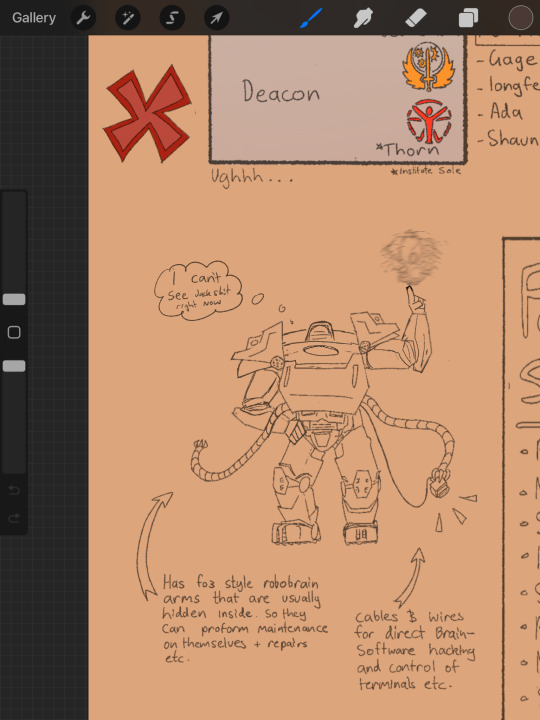
#TAHNKS FOR THE ASK I love yapping about tango#sorry if this isn’t super coherent !!!#so much more could be said too#typos! tango tag#typos! ocs tag#asks
12 notes
·
View notes
Note
XURK1TREE 👀 it's on nof my faves aughh
The Ultra Beasts were curious, yet dangerous visitors to the world unlike anything anyone's ever seen. Humanity sought to understand these alien creatures, but found that their native dimensions were dangerous for normal people to traverse.
That's where they came in. They were designated Ulysses.
A research android built to explore Ultra Space and collect data on the worlds within and the beasts that lived there. Equipped with their own team of pokemon in case they tried to attack, Ulysses was sent out on their maiden voyage into the unknown. They were instructed to return if things proved too dangerous, but they were built for this job and they would see it through. Chalk it up to the emotions they were programmed with, just in case they met any other people in Ultra Space.
Traveling was just as unpredictable as the studies showed. Ulysses wasn't sure where they ended up- their arrival in this Ultra World was rough, and only after running a diagnostics check to confirm nothing was damaged could they examine their surroundings. It was dark here, but strangely well-lit. The sky was a deep, dark blue near constantly lit by flashes of lightning, with thunder booming to announce each strike. Odd buildings dotted the landscape, monolithic and glowing a gentle blue. They didn't see anything around yet, but...the air was practically buzzing with electricity. It was uncomfortable to their sensors, and they didn't quite come prepared to deal with overcharging... The best solution was to move through quickly, find the beasts, gather data, and leave. Easy 20-minute expedition!
The buzzing in the air grew louder, almost painfully so, and the robot had little time to react to lightning striking VERY close to their position. Warning symbols flashed in their vision, the electricity was getting too much for them to handle and they had JUST arrived! Ulysses ambled away towards a rocky outcrop that provided some cover...but the storm likely wouldn't let up, and too much exposure would damage them and potentially deactivate them for good. It would seem they weren't nearly as prepared as their creators would've hoped...outside of the overflow of electricity, shame filled their circuits at the thought of their first mission being a failure.
Outside of the warnings flashing over their vision, Ulysses could pick up on movement. A sign of life in this barren place could only mean one thing- an Ultra Beast! What approached was easily twice Ulysses' size. It appeared to be humanoid in shape, but closer inspection revealed that its body was made of countless cables and wires, bound in some spots by glowing white bands. Its hands were purely metallic and sharp at the ends, looking like claws. Its head resembled a starburst, or maybe some kind of spark- visual analysis was a bit difficult due to their current state, but Ulysses recognized it as UB-03. A thick cordlike tail wagged behind it, and it was drawing ever closer to them...
Ulysses could note that its head was flashing at them. It was too rhythmic to be just random- could this be how it communicated? It wasn't like they understood, but they were in no position to do anything...they could feel some of their limbs shorting, causing them to jerk erratically. The beast flinched back, before drawing closer. A curious hand reached out, watching electricity jump between its finger and their body. After a moment of what seemed to be deliberation, it got closer. It didn't seem hostile at the very least-
Suddenly, Ulysses found themselves being hoisted up by the back of their suit. While it still didn't seem hostile, it was still well over twelve feet tall. It lifted the robot up a bit above its head, which tilted around a bit as if it was studying them. Then its other hand came up, moving towards its torso which was strangely "unbound" compared to the rest of its cablelike body. It opened itself up, wires parting and opening into a space that it was now lowering them into. Were they being...consumed? Ulysses was helpless to stop it from doing whatever it wished. At this point, it was preferable to being out in the harsh elements.
They were lowered into a loosely bag-shaped space, and the cables that parted to accept them inside moved to trap them. The inside of the beast was just as strange as the outside- the space shifted and pushed against them, with the internal cabling being covered in a light layer of some sort of slime. Blue lights traveled along the cables that surrounded them, particularly where their body touched the rubbery surface of the cables. Ulysses could feel electricity draining from their body...could it be leeching power from them? The warning symbols faded away as the excess electricity was leeched from them. As observed, this beast seemed to feed on electricity...the lightning strikes outside would likely keep it well fed. It wasn't likely it could digest them...but when was it going to let them out? Pressing at the cables did nothing for the research android. It wasn't drawing any more power from them, so this position allowed for some extensive data collection for the time being.
#soft vore#safe vore#extreme cuddling#v0re#pokevore#halfsize vore#robot prey#protective vore#vore fic#answered#anonymous#whats that? weird alien vore? on YOUR dashboard?#would this count as protective vore? im tagging it as such just in case#i hope you guys dont mind these more experimental pieces i love messing around#i dont think thisll be too popular bc its Weird but fuck it. the ubs are aliens it can be weirder
32 notes
·
View notes
Text
Why would the headlights of your car remain on after the ignition is switched off?
If your car’s headlights remain on after switching off the ignition, it could be due to several factors. Here’s a breakdown of common causes and solutions:
1. Manual Headlight Switch Left "On" • Cause: If the headlight control is set to "On" (not "Auto"), lights may stay on even when the car is off.
• Fix: Turn the switch to "Off" or "Auto." Many modern cars (e.g., Toyota, Honda) have automatic headlights that shut off with the ignition.
2. Delayed Shut-Off (Follow-Me-Home Lights) • Cause: Some cars (e.g., GM, Ford) have a "lighting delay" feature that keeps headlights on for 30–60 seconds after locking the car.
• Fix: Disable this feature via the infotainment settings (e.g., Settings → Lighting → Exit Delay).
3. Faulty Light Sensor (Automatic Headlights) • Cause: A malfunctioning ambient light sensor (e.g., dirty, damaged) may fail to detect darkness and keep lights on.
• Fix: Clean the sensor (usually on the dashboard) or have it recalibrated.
4. Stuck Relay or Wiring Short • Cause: A stuck relay or corroded wiring can keep the headlight circuit energized.
• Test: Swap the headlight relay with another identical one (e.g., horn relay) to see if the issue persists.
• Fix: Replace the relay (cost: $10–$30) or repair damaged wiring.
5. Ignition Switch Failure • Cause: A worn ignition switch may not send a "power off" signal to the headlight circuit.
• Clue: Other systems (radio, power windows) also stay active when the key is removed.
• Fix: Replace the ignition switch (cost: $150–$400).
6. Aftermarket Modifications • Cause: Poorly installed LED kits, alarms, or wiring harnesses can backfeed power to the headlights.
• Example: A miswired trailer hitch or dashcam might keep the circuit live.
• Fix: Inspect aftermarket components and consult an auto electrician.
7. Battery Saver Mode • Cause: Some cars (e.g., Ford, Hyundai) keep lights on temporarily if the battery is critically low.
• Fix: Charge or replace the battery.
8. Software Glitch • Cause: A bug in the Body Control Module (BCM) or firmware can disrupt lighting logic.
• Fix: Update the vehicle’s software at a dealership (e.g., Tesla, BMW).
Troubleshooting Steps
Check the headlight switch position.
Lock the car (many systems shut off lights upon locking).
Disconnect the battery temporarily to reset the system.
Scan for error codes with an OBD2 scanner (look for BCM codes like U0231).
Critical Risks
Dead Battery: Headlights left on overnight can drain the battery (e.g., 55W halogens draw ~5A/hour).
Legal Issues: Some states (e.g., California) prohibit leaving headlights on in parked vehicles.
When to Visit a Mechanic If basic fixes fail, suspect:
Faulty BCM ($500–$1,200 to replace).
Parasitic Drain (use a multimeter to test for >50mA draw after shutdown).
Let me know your car’s make/model for tailored advice! 🚗💡

#led lights#car lights#led car light#youtube#led auto light#led headlights#led light#led headlight bulbs#ledlighting#young artist#car culture#race cars#classic cars#car#cartoon#cars#suv#vehicle#automobile#muscle car#car light#headlight bulb#headlamp#headlight#car lamp#lamp#lights
2 notes
·
View notes
Text

A very warm welcome to everyone! This is my new humble lil' art account, where I will (on a roughly weekly basis) post drawings (and associated story snippets) from my fictional universe, "The Soft and Echoing Vortices" (subject to revision because I am indecisive as fuck).
Below is an extract from the story this came from:
"As she had predicted, the sensors did not allow Johannes to sleep.
He had spent so long setting all of these mechanisms with Bondarchevsky that he could tell from the sounds what was happening to the lighthouse — when a wave would start climbing, he could hear crackled humming from the wires carrying near their load capacity, as they sent pressure readings upwards to the control room, metallic clacking from above as the pendulum regulating the light’s rotation speed adjusted itself, then thud, thud, thud went the sensors placed below the stairs, facing the waves outside, as they each re-adjusted themselves to their normal position after being pushed by the wave.
It should have all been silent, just like the new nuclear generator — any noise was a mistake they had made; wires carrying too close to capacity, sensors not well-fitted enough scraping against the walls, chains rolled with little knots in them. These signals went through his nerves, he felt everything the circuits felt ..."
If you'd like to read the whole story, you can do so here: https://www.industryoxford.com/trouble
This story was inspired by the Aniva lighthouse on the Eastern coast of Russia, which in the 60s was fitted to be entirely automated, using nuclear power to ensure it could hypothetically go on without ever needing human intervention. After the fall of the Soviet Union, it fell into disrepair and was looted. It has now been left to decay. For more of my art, check out my instagram
#sketch#seascape#lighthouse#haunting#melancoly#thesoftandechoingvortices#pencil#ocean#sea art#ocean art#storm#sakhalin#amateur artist#new art tumblr#new artist#artists on tumblr#coast#the lighthouse#soviet
7 notes
·
View notes
Text
Creating Immersive Pixel Art Displays for Live Events
Ever walked into a concert venue and felt like the visuals were alive—rippling in time with the beat or changing colors as the crowd moved? That’s the magic of an immersive pixel art display: a dynamic canvas built from thousands of little LED pixels that react, evolve, and invite interaction. In this post, we’ll explore how LED pixel displays are transforming pixel art live events, and how you can design an installation that feels both mesmerizing and meaningful.
What Is an LED Pixel Display?
An LED pixel display is made of individual light modules—think tiny RGB LEDs arranged in grids or strips. Each LED can change color and brightness independently, forming a pixel. When animated cohesively, these pixels form moving images, text, or abstract stories that dance across a stage or backdrop. For designers, the challenge is to turn static visuals into interactive pixel art that responds to sound cues, audience movement, or timecode, creating a fully immersive experience.

Why Pixel Art Displays Captivate Audiences
High Visual Impact Pixel arrays can render bold graphics and motion visuals that would be impossible with static sets.
Customization & Interactivity Integrate sensors or music triggers so the art reacts in real time—light pulses synced to bass drops, or waves that follow the crowd.
Versatility From linear LED strips to massive wall-mounted grids, pixel art displays can fit stages, domes, trusses—or even handheld gear.
Building Blocks of an Immersive Pixel Art Display
LED Pixel Modules & Pitch
Pixel pitch refers to the distance between center points of LEDs: smaller pitch (~4 mm) gives crisp, sharp images; larger pitches (>10 mm) are ideal for long-throw setups.
Choose modules rated for outdoor use (IP65+) for durability at outdoor live events or festivals.
Controllers & Protocols
Controllers drive animations via WS2812, SK6812, or DMX protocols. These bridge the gap between creative content and hardware. A reliable pixel controller can come from a reputable professional shop—ensuring quality performance and continued tech support.
Power & Signal Management
LEDs need steady power—usually 5 V or 12 V—so calculate amps per segment and add power injection points.
Extend signal using buffers or data repeaters to maintain sync across your entire display.
Designing the Content
Concept & Storyboarding
Start with a visual concept—synth-wave animation, audio-reactive waves, or VR-integrated graphics. Sketch storyboards and run test animations in software like TouchDesigner or Processing.

Mapping Your Grid
Accurate grid mapping—drawing each pixel's real-life position in your software setup—is critical. Even a small offset can skew the entire display.
Audio-Visual Integration
Link visuals to music using MIDI, OSC, or SMPTE timecode so the animation responds seamlessly to every beat, vocal cue, or lighting change.
Rigging & Setup Tips
Modular Structure Build your display from panels or strips that connect easily on-site. This makes installation smooth and maintenance easier.
Cable OrganizationLabel data and power lines. Use Velcro or cable ties to keep everything neat and trip hazards at bay.
Testing & CalibrationAlways do a full tech rehearsal. Look for dead or dim pixels, color shifts, or lag between triggers and playback.
Real-World Use Case
Take a mid-sized festival: festival-goers wear LED wristbands that light up with crowd cheers, while a massive pixel art wall echoes those patterns behind the stage. The result: a unified, reactive stage design that visually bonds the audience to the performance.
Best Practices for Success
Plan for failure: keep spare strips, controllers, and power supplies on hand.
Use compression-friendly content: looped animations or GIF-style visuals keep playback smooth.
Label everything: from IP addresses on networked controllers to physical cable runs, clarity speeds up setup and troubleshooting.
Document your setup: a labeled wiring diagram helps future iterations go faster and safer.
Final Thoughts
The future of pixel art live events is bright—literally. LED pixel displays let you build immersive, interactive shows that stand out and resonate deeply. Whether it’s a club, concert hall, or outdoor festival, these displays combine creative design with technical precision to deliver truly memorable experiences.
When you're ready to source your LED strips, controllers, and power gear, working with a reputable professional shop ensures hardware reliability and the kind of expert advice that helps you push creative boundaries—and deliver shows that truly shine.
With careful planning, thoughtful design, and thorough testing, you're on your way to creating spectacular pixel-powered experiences that wow crowds and elevate your production game.
#stage lighting#led wall display#led wall light#led lights#pro audio equipment#pro audio gear#audio video
0 notes
Text
Wires That Work: Unraveling the Power of India’s Wire Manufacturing Industry
From binding to building, from crafting to construction — wires are the unsung heroes that quietly hold the framework of development together. As industries evolve, the demand for high-quality wire products continues to soar, turning wire manufacturing into one of the most versatile and value-driven sectors in the country.
In this blog, we explore the wire manufacturing industry’s rise, its contribution to India’s economy, and the latest trends shaping its future. Whether you're a manufacturer, supplier, or someone curious about industrial growth, this guide will walk you through the fascinating world of wires — categorized into different areas for better understanding.
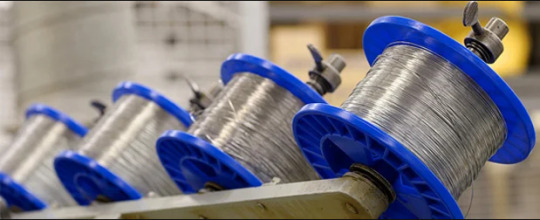
Category 1: The Backbone of Packaging – Stitching Wires
Packaging might seem simple on the outside, but what holds it all together is the humble stitching wire. These wires are used across printing presses, corrugated box manufacturing, notebooks, and more. Today, Stitching Wire Manufacturers in Maharashtra are innovating faster, offering rust-resistant and high-tensile wires that improve durability and finish. With e-commerce booming and the packaging sector expanding, the role of stitching wires has grown more critical than ever.
Why Stitching Wires Matter:
Provide strong closures for corrugated boxes
Essential for binding books, magazines, and cartons
Cost-effective for bulk packaging operations
India’s packaging revolution has fueled innovation in wire manufacturing, with producers now focusing on customized gauges, eco-friendly coatings, and better spools to enhance machine compatibility.
Category 2: Construction, Power & Progress – The Multi-Sector Influence
Wires aren’t limited to one industry — their influence stretches across infrastructure, agriculture, power transmission, fencing, and even telecommunications. Within this ecosystem, Stitching Wire Manufacturers in India are expanding their range to cater to industry-specific needs.
Whether it’s the steel used in concrete reinforcement or wires needed in power grid extensions, manufacturers are adapting to dynamic requirements.
Key Applications:
Reinforcement in construction and real estate projects
Transmission and electrical grounding
Support structures in agriculture and poultry farming
The all-round adaptability of stitching and binding wires positions them as must-have materials in both urban and rural development.
Category 3: Innovation & Technology in Wire Production
Wire manufacturing has evolved from basic drawing machines to smart, automated plants equipped with robotic arms and advanced testing systems. The integration of technology is making wires more reliable, longer-lasting, and performance-driven.
Tech-Driven Trends in the Industry:
Digital wire drawing for precision thickness and strength
Corrosion-resistant coatings for outdoor utility
Eco-friendly galvanization methods to reduce environmental impact
Quality automation using real-time sensors and feedback systems
As demand increases, smart production methods are helping businesses scale up while keeping quality intact. And that's where Galvanized Iron (GI) Wire Manufacturers in India are leading — offering wire solutions that last longer, especially in moist or coastal environments where rust is a concern.

Category 4: Sustainability & Exports – Going Global with Indian Quality
Sustainability isn't a buzzword anymore; it's a necessity. Indian wire manufacturers are adopting environmentally conscious methods — recycling scrap metals, using renewable energy, and reducing chemical runoff.
At the same time, Indian wire products are making their mark globally. Export demands are rising from Southeast Asia, Africa, and parts of Europe due to India’s strong quality benchmarks and cost efficiency.
India’s Global Edge:
Competitive pricing without compromising quality
Consistency in tensile strength and product finishing
Compliance with international standards and testing norms
Manufacturers are also leveraging digital platforms and B2B marketplaces to reach clients abroad, transforming how wire trading works in the digital era.
Category 5: Jobs, Growth & Local Empowerment
Wire manufacturing plants provide more than wires — they offer livelihoods. This industry supports thousands of families through both direct and indirect employment. From machine operators and metallurgists to transporters and traders, it has become a significant employment generator.
Social and Economic Benefits:
Upliftment of semi-urban and rural areas through industrial units
Training programs and upskilling under government initiatives
Women workforce participation in packing and quality check processes
As demand increases for binding wires used in construction, fence-building, and packaging, MS Binding Wire Manufacturers in Tamilnadu are emerging as crucial contributors to both state and national economies — offering tailored solutions for infrastructure and agriculture alike.
What the Future Holds
The wire manufacturing sector in India is positioned for exciting times ahead. Innovations in material science, growing demand from modern infrastructure, and a global shift towards high-performance materials ensure that wires — simple yet strong — continue to power progress.
Future Focus Areas:
Lightweight yet strong wire materials
Smarter coatings for enhanced outdoor performance
AI-driven supply chain management for faster delivery
Final Words: A Connected Future
Wires may be small in size, but their economic and functional impact is enormous. As industries expand and infrastructure scales up, wire manufacturers are playing a pivotal role in supporting India's developmental ambitions. From holding packages together to powering cities and building homes — wires are everywhere, working silently behind the scenes.
With technological innovation, sustainability efforts, and expanding global footprints, the Indian wire industry is on a path of growth, inclusion, and resilience. Whether it's through Stitching Wire Manufacturers in Maharashtra crafting durable packaging solutions or MS Binding Wire Manufacturers in Tamilnadu driving construction, wires will continue to shape the framework of India’s economic progress.
#galvanized iron wires manufacturer (gi) in india#ms binding wires manufacturer in delhi#ms binding wires manufacturer in india#stitching wires manufacturer in india#ms binding wires manufacturer in tamil nadu#ms binding wires manufacturer in punjab#stitching wires manufacturer in maharashtra#galvanized iron wires manufacturer in delhi#galvanized iron wires manufacturer in maharashtra#ms binding wires manufacturer in telangana
0 notes
Text
0 notes
Text
Anti-Looter Kit Review
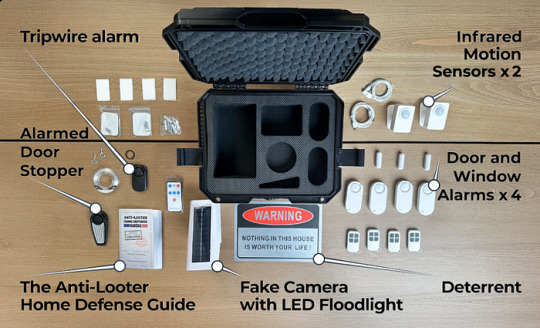
Introduction
In a time where crime rates are escalating and natural disasters or social unrest can cause widespread chaos, home security has never been more important. Enter the Anti-Looter Kit, a powerful, tactical security solution developed by former CIA officer Jason Hanson. Drawing on real-world defense strategies used by intelligence operatives, this home security system is designed to fortify your home, protect your loved ones, and provide peace of mind when it matters most. In this comprehensive Anti-Looter Kit review, we dive deep into the features, performance, and value of this unique home defense solution.
Anti-Looter Kit Review — Overview
The Anti-Looter Kit is not just another home security system. It’s a fully integrated, CIA-inspired tactical defense package built for crisis readiness and total perimeter protection. Whether you’re worried about looters during a blackout, burglars while you’re on vacation, or intrusions in times of civil unrest, this kit offers a reliable, power-independent security solution. From motion sensors to flood lights, alarms, and psychological deterrents, the Anti-Looter Kit has all the angles covered.
What Is the Anti-Looter Kit?
The Anti-Looter Kit is a portable, easy-to-install home defense system comprised of multiple devices designed to deter, detect, and defend against unauthorized intrusions. Developed by Jason Hanson — a decorated ex-CIA officer — it provides military-grade protection for civilians, offering the same type of technologies used by field agents to protect high-value assets. All components are packed in a shockproof, waterproof tactical case, making it perfect for both home and travel use.
Check this out, click here
Anti-Looter Kit Review — Features and Benefits
Let’s break down what you get with the Anti-Looter Kit:
1. Integrated All-Angle Motion Sensors
These infrared-powered motion detectors monitor movement in your home even while you’re away. Once triggered, they can send instant alerts to your smartphone or automatically turn on connected devices like lamps or TVs to simulate occupancy.
2. Early Warning Perimeter Tripwire
A tried-and-true CIA field method, this tripwire emits a loud sound when breached, providing a critical early warning system. Use it to secure driveways, garages, and campgrounds. This analog device is blackout-proof, ensuring functionality in all scenarios.
3. Dual Function Alarmed Door Jammer
A hybrid between a doorstop and an alarm, this device activates a shrill alarm if someone tries to breach your door. Its wedge design prevents entry while the alarm startles intruders and alerts you or neighbors.
4. Blackout-Proof Flood Light
This motion-triggered solar-powered floodlight acts both as a surveillance mimic and a strong visual deterrent. Ideal for dark corners or entryways, it requires no wiring and works independently from the power grid.
5. Stealth Door and Window Alarms
Comprising four compact sensors and two remotes, these alarms protect the most vulnerable points of your home. A panic button adds extra peace of mind during emergencies.
6. Visual Deterrent Warning Sign
A strategically worded sign that psychologically disarms intruders, making them think twice before attempting a break-in. It doesn’t suggest violence or illegality but serves as a powerful deterrent.
7. Waterproof Tactical Carrying Case
Rugged, shockproof, and ready for any environment, this case is perfect for long-term storage or travel. With two security latches and foam compartments, your kit stays secure and organized.
Check this out, click here
How Does It Work?
Each component of the Anti-Looter Kit functions either autonomously or as part of a layered defense approach:
Set the tripwire around your perimeter.
Install motion sensors and stealth alarms at key access points.
Position the floodlight in dark, vulnerable areas.
Place the visual deterrent sign prominently.
Use the door jammer at night or in unfamiliar locations.
Combined, these tools create a fail-proof early warning system, alerting you to threats before they reach your front door, even during blackouts or in remote areas without cellular service.
Anti-Looter Kit Review — My Experience Using It
After using the Anti-Looter Kit in a suburban environment and testing it in a rural camping setting, we can confidently say it delivers on its promises. The setup process took under an hour, and each device worked right out of the box. The motion detectors were sensitive but not overly so, and the tripwire’s simplicity belies its effectiveness. During a test run, the floodlight activated instantly and startled our test subject before they even approached the porch.
We appreciated the alarmed door jammer most during a hotel stay. The peace of mind knowing that no one could enter unannounced was invaluable. The inclusion of detailed tactical instructions and CIA strategies in the Home Defense Guide made the kit feel less like a product and more like a training system.
Anti-Looter Kit Review — OTO DETAILS
At the time of writing, purchasing the Anti-Looter Kit includes two powerful bonuses:
75 Items That You Need to Stockpile Before the Collapse Authored by survival expert Claude Davis, this guide details essential survival supplies that can be obtained affordably and quickly.
The Most Effective Remedies That We Lost to History A treasure trove of forgotten natural remedies that offer real-world health solutions — many of which are found in your backyard.
Together, these bonuses add practical and life-saving value to the core offer.
Pros and Cons
Pros:
Comprehensive, CIA-inspired security system
No reliance on electricity or Wi-Fi
Easy to set up and portable
Real-world deterrence and detection features
Includes valuable survival and medical knowledge
60-day Keep-the-Kit Money-Back Guarantee
Great value for the price
Cons:
Limited to 250 kits with bonuses
May not integrate with smart home systems
Requires manual installation, though simple
Check this out, click here
Who Should Use It?
The Anti-Looter Kit is ideal for:
Homeowners concerned about rising crime
Travelers who frequent Airbnbs or hotels
Preppers preparing for power grid failures or social collapse
Parents and families wanting affordable peace of mind
Outdoor enthusiasts needing perimeter security while camping
Anti-Looter Kit Review — Price and Evaluation
The full retail value of the kit and bonuses is over $300, but for a limited time, it’s available at only $149. That’s a 50% discount, and unlike traditional security systems, there are no subscription fees or ongoing costs. It’s a one-time investment in your safety.
Plus, the Keep-the-Kit Guarantee means that even if you request a refund, you still keep the devices — you only need to return the case. This is an unbeatable offer and speaks volumes about the confidence behind this product.
Conclusion
The Anti-Looter Kit is one of the most effective, affordable, and reliable home defense solutions available today. Designed by a former CIA officer with real-world experience, it combines tactical effectiveness with user-friendly setup and practical functionality. In today’s uncertain world, this isn’t just a product — it’s a must-have survival asset.
Anti-Looter Kit Review verdict: 10/10 — Highly Recommended.
Bonus: $100K Survival Bonus for Buyers Through This Link
If you purchase the Anti-Looter Kit via the link in this article, you’ll receive an exclusive $100,000 survival bonus package which includes:
High-level survival guides
Advanced urban escape strategies
Self-defense blueprints
Crisis food sourcing techniques
Psychological warfare tactics used by intelligence agencies
Only available to those who buy through this special link. Don’t miss out!
👉 Click Here to Get Your Anti-Looter Kit + $100K Bonus Now
Secure your home. Protect your family. Be ready for anything.
#antilooter #security #review #save
0 notes
Text
Spring Break – BreakCore Music Player
Final Project
For my final project in physical computing, I designed and built a digital musical instrument that I call the Spring Break – BreakCore Music Player. Drawing inspiration from the New Interfaces for Musical Expression (NIME) movement, this instrument transforms hand gestures into musical actions, allowing me to perform and manipulate breakcore-style audio using two ultrasonic distance sensors connected to an Arduino and mapped into Max MSP. It’s a controller, a performance tool, and a kind of interactive sculpture all in one—and it really made me feel like I was DJing a rave set with my hands.


The original concept came together as I experimented with the HC-SR04 distance sensors. I had initially planned to use motion sensors, but they proved too difficult to wire. After talking with someone more experienced, I pivoted to ultrasonic sensors since they offer similar spatial sensing but with more reliable outputs. Once I got one sensor working, I saw how smoothly it could translate distance into digital signals, so I added a second. This two-sensor setup let me build a kind of “on/off�� control system, where each hand movement could start or stop specific layers of music.




The physical design of the instrument was simple but meaningful. I laser cut a small enclosure using MakerCase and acrylic in the Spelman Innovation Lab, and decorated it with a guitar-shaped design on the front panel to visually signal its purpose as a musical object. Inside the box, I mounted the Arduino and wired both sensors to a single breadboard—something I hadn’t done before, but it worked flawlessly on the first try. The sensors were positioned facing upward so I could hover my hands over them during the performance.


Left: Arduino Code for first sample, Right: Testing first sample
The Arduino code handled the distance calculations and serial output. Each sensor was triggered in the loop, calculating the distance in centimeters and printing both values as a single line of data. Here's the exact code I used:
const int trigPins[2] = {9, 11};
const int echoPins[2] = {10, 12};
float distances[2];
long duration;
void setup() {
Serial.begin(9600);
for (int i = 0; i < 2; i++) {
pinMode(trigPins[i], OUTPUT);
pinMode(echoPins[i], INPUT);
}
}
void loop() {
for (int i = 0; i < 2; i++) {
// Trigger pulse
digitalWrite(trigPins[i], LOW);
delayMicroseconds(2);
digitalWrite(trigPins[i], HIGH);
delayMicroseconds(10);
digitalWrite(trigPins[i], LOW);
// Read pulse
duration = pulseIn(echoPins[i], HIGH, 30000); // timeout safety
distances[i] = (duration * 0.0343) / 2;
// If no signal, set to 0
if (duration == 0) distances[i] = 0;
// Print to serial
Serial.print(distances[i]);
Serial.print(" ");
}
Serial.println(); // New line
delay(100);
}
In Max MSP, I created a patch that received the serial data from the Arduino, unpacked it, and used simple conditional logic to check whether the hand was within a certain threshold distance—specifically 20 centimeters. If so, it sent a bang that triggered a set of audio samples. Each sensor was mapped to a different set of three layered breakcore audio loops. Here’s the final version of the patch:

The left and right sides of the patch represent each of the sensors. When a hand is detected within range, it activates all three samples on that side, creating a stacked, textured sound. I didn’t map pitch or volume directly, but the threshold-based triggering gave me solid, real-time control over the performance. The layering of audio and the fast, cut-up loops created that signature breakcore energy I was going for.
When it came time to compose a piece, I built my sound palette from breakcore-inspired loops and samples I either made or found online. The genre naturally lends itself to this kind of chaotic, reactive interaction. Once I tested the first drum loop with my hand and saw it activate in sync with my movement, I knew exactly what direction to go. My final piece was more of an improvised jam session than a strict composition, but that made it feel alive—and I genuinely felt like I was DJing with air gestures.
This project wasn’t easy. Learning Max MSP from scratch was a major challenge. The interface is not beginner-friendly, and figuring out how to parse serial data, unpack values, and link it to audio playback took a lot of trial and error. I also ran into a brief issue where one of my sensors wasn’t showing up in the serial monitor, which I eventually solved by testing it in a separate sketch and reconnecting the wiring. Another challenge was figuring out how to keep the whole build compact—I’d used two breadboards in my midterm, but I managed to wire both sensors on one board for this project, which helped with space and structure.
If I had more time, I’d love to build on this project by introducing more nuanced sound control. Maybe mapping pitch to distance, adding a third sensor for tempo control, or even building a visual interface with responsive lights or projections. I can definitely imagine this evolving into a fully-fledged digital instrument or live performance tool.
More than anything, this project taught me that I can make music with my hands—literally. I now understand how to translate gesture into sound, how to route sensor data into an audio environment like Max MSP, and how to create systems that feel playful and expressive. I walked into this project nervous about how much I didn’t know, and I came out of it with a finished, functional instrument that let me perform a genre I love. That’s something I’ll carry with me well beyond this class.
S.O to the Spelman Innovation Lab, the IL staff and Professor Holmes- I couldn’t have don’t this without you!
xx
0 notes
Text

Explosionproof Displacement Draw Wire Encoder and Sensor with RS485 & Analog Output
Key features
Exceptional Durability: Designed for 5 million fatigue cycles, ensuring long-lasting performance.
Advanced Digital Communication: Absolute position sensing with power-off memory for reliable data retention.
Durable Wire Outlet: Ceramic material enhances wear resistance, extending the life of the steel wire rope.
Data Interfaces: Equipped with Explosionproof RS485 connections and supports Analog Output for seamless data integration and communication.
High-Quality Construction: Features a 0.8mm diameter, imported flexible stainless steel wire rope with a nylon coating for reduced friction and enhanced durability.
Visit https://briterencoder.com/product/explosionproof-displacement-draw-wire-encoder-and-sensor-with-rs485-analog-output/ for more.
1 note
·
View note
Text
Vertical Pay-Off Machines for Wire Drawing: A Comprehensive Guide

Vertical pay-off machines are essential components in wire drawing operations, designed to efficiently unwind wire rods without tangling or interrupting production. This guide covers everything you need to know about these specialized systems, from their working principles to selection criteria and maintenance requirements.
Vertical Pay Off Machine for wire drawing
What Are Vertical Pay-Off Machines?
Vertical pay-off machines are devices used for the controlled unwinding of wire rod in wire cold rolling, drawing, and stretching machines. They are engineered to facilitate high-speed rod pay-off while preventing the development of tangles/snarls and production interruptions.
These systems are particularly recommended for medium wire rod diameters and consist of two main components working in combination:
Tilting fingers (typically a pair)
Pay-off tower
Key Components and Operation
Tilting Fingers Mechanism
The tilting fingers are a critical part of vertical pay-off systems, enabling continuous rod feed into cold rolling, drawing, and stretching lines. These components feature:
A pair of specially shaped arms constructed from steel pipes
Sand-filled internal structures to reduce operational noise
90-degree rotation capability on a vertical plane (between horizontal and vertical positions).
In the horizontal position, the fingers allow loading of wire rod directly from the stock area using overhead cranes or forklifts. After loading, the fingers rotate to the vertical position, ready for unwinding the wire toward the pay-off tower.
Pay-Off Tower
The pay-off tower enables vertical high-speed unwinding without tangles or production interruptions. Its features include:
Sturdy steel frame with an adequate base
Mobile trolley with de-winding wheel at the top, moved by an electric hoist
Thin gauge mild steel sheeting on sides to contain dust
Metal slide at the base between fingers for dust collection
Safety devices that automatically stop the line in emergencies (like knot detection)
Modern systems incorporate adjustable sensor technology that can be set for different wire diameters without needing to lower the upper basket, enabling quick production changes with zero downtime.
Technical Specifications
Vertical pay-off machines vary in their capabilities:
Working speed: Up to 10 m/s (maximum)
Inlet wire diameter: Typically 5.5-20 mm (some models handle up to 8mm or 5-11mm)
Wire quality: Low carbon wire rod (smooth or ribbed)
Weight capacity: Up to 3 tons per drum
Height: Up to 7,300 mm with drum vertical height up to 3,000 mm
Vertical Pay Off Machine
Types of Vertical Pay-Off Systems
Beyond standard vertical pay-offs, specialized variants include:
Rotating Pay-Off Vertical with Tilting and Expanding (RPV-TE): Designed for heavy wire types that cannot be coiled over top or allow no twist, featuring a rotating plate that moves clockwise and anti-clockwise.
Vertical pay-offs with hydraulic former tilting/rotating arrangement: Enable non-stop operation of drawing machines with entanglement-free feeding even at higher speeds.
Vertical spool pay-offs: Used to feed drawn wires to intermediate processes like patenting or annealing.
Advantages of Vertical Pay-Off Systems
Space efficiency: Vertical orientation occupies less floor space compared to horizontal systems
High-speed capability: Designed for entanglement-free feeding at higher speeds
Continuous operation: Features like double flipper pay-off allow coil changes without stopping the machine
Safety: Integrated safety devices and protections according to standard regulations
Flexibility: Adjustable for different wire diameters and quick production changes
Selection Considerations
When choosing a vertical pay-off machine, consider:
Wire diameter range: Ensure compatibility with your production requirements
Coil weight capacity: From 1.5 tons to 3 tons typically
Production speed: Match to your line requirements (up to 10 m/s)
Automation level: Options include sensor systems for automatic diameter adjustment
Safety features: Laser scan devices, emergency stops, and protection portals
Maintenance requirements: Consider lubrication needs and inspection frequency
Wet Drawing Machine
Maintenance Best Practices
Proper maintenance ensures optimal performance and longevity:
Lubrication: Regular refueling of lubrication systems and checking oil pumps
Component inspection: Regular checks of motors, reducers, brakes, and transmission components
Electrical systems: Periodic maintenance of control systems, circuit connections, and sensors
Wear parts: Monitoring and replacement of tempered steel plates and other wear components
Applications in Wire Drawing Lines
Vertical pay-off systems serve critical functions in:
Dry drawing processes where coils need loading without stopping the line
Feeding wire rods to cold rolling, drawing, and stretching machines
Intermediate processes like patenting and annealing when configured as vertical spool pay-offs
Optional Accessories and Customizations
Manufacturers often offer various enhancements:
Anti-fall friction systems
Security blocks
Pinch-roll attachments
Wire rod supervision kits for automatic speed line management
Optical knot detection systems
Threading motorized trolleys
Industry Trends and Innovations
Recent advancements include:
New generation sensor systems for automatic diameter adjustment
Improved knot detection technologies that prevent wire breakages
Enhanced safety systems like laser scanning devices
More ergonomic designs for operator comfort
Vertical Pay Off Machine for wire drawing
Vertical pay-off machines continue to evolve, offering greater efficiency, flexibility, and reliability in wire drawing operations across various industries. By understanding these systems' capabilities and proper selection criteria, manufacturers can optimize their wire production processes for maximum productivity and quality.
#Vertical Pay Off Machine for wire drawing#Horizontal Pay Off Machine#Vertical Pay Off Machine#Wet Drawing Machine
0 notes
Text
How To Improve Fleet Safety with Collision Avoidance Systems?

In modern transportation, safety is non-negotiable. Fleet operators and drivers alike benefit from advanced systems that minimize risk and automate hazard detection. One such innovation is the Collision Avoidance Systems Installation, an intelligent setup that monitors vehicles’ surroundings and reacts in real time. At Orbital Installs, our mission is to ensure these critical devices aren’t just functional, but also fully integrated into your fleet. Drawing on our years of expertise, we tailor each installation to specific vehicle types and operational needs, ultimately cutting accident rates and fostering driver confidence. Below, we explore the fundamentals of collision avoidance, examine how Orbital Installs approaches system setup, and show why you’ll never regret investing in robust, data-driven safety technology for your fleet.
Why Collision Avoidance Systems Matter
While driver training and standard safety measures remain important, technology is rapidly elevating how we prevent crashes. A Collision Avoidance Systems Installation typically encompasses sensors, cameras, and sometimes radar or lidar modules that detect nearby objects. The system can alert drivers through visual or audible signals, and in certain advanced models, it may even intervene, applying brakes or steering away from imminent hazards. Such instant feedback reduces driver reaction time, mitigating the likelihood and severity of collisions. For fleets operating in high-traffic zones, mountainous areas, or challenging weather, these systems offer an extra layer of security. By fusing data from multiple sensors, collision avoidance solutions ensure that drivers maintain greater situational awareness. Ultimately, fewer accidents translate into lower insurance premiums, minimized downtime, and safer roads for everyone.
The Orbital Installs Approach to Collision Avoidance
At Orbital Installs, we don’t just bolt on devices; we integrate them into your broader fleet management strategy. Our method begins with an in-depth analysis of your operational environment. Are your vehicles often in city congestion? Or do they navigate rural routes with limited visibility? Understanding these nuances helps us tailor the hardware and calibrate settings. Next, our technicians handle precise mounting and wiring, ensuring that sensors, cameras, and control units remain in optimal positions. We also link the system to your existing telematics data where feasible, consolidating safety insights into a single dashboard. Lastly, we conduct comprehensive testing verifying that each sensor triggers correct alerts and that the system’s logic matches real-world driving conditions. This thorough approach to Collision Avoidance Systems Installation delivers true confidence behind the wheel.
Benefits of Collision Avoidance Systems Installed
When fleets adopt a collision avoidance system, they unlock multiple advantages:
Enhanced Driver Confidence: Alerts for sudden obstacles or lane departures reduce stress and help drivers concentrate on safe maneuvers.
Lower Insurance Premiums: Many insurers offer discounts for advanced safety features, reflecting reduced accident likelihood.
Route Efficiency: By preventing collisions, you avoid costly delays, vehicle repairs, and unplanned downtime.
Data-Driven Feedback: Some collision systems record near-misses or braking events, letting fleet managers identify recurring problem areas or driver habits.
Brand Reputation: Minimizing crashes fosters public trust, crucial for cargo carriers and passenger transport operators.
Ultimately, installing advanced sensors and warning systems fosters a safety-first culture. With Orbital Installs, your fleet can adopt these technologies smoothly, capitalizing on each advantage from day one.
Collision Avoidance Systems Installation Near Me: Why Local Expertise Matters
A quick online search might have you searching for “Collision Avoidance Systems Installation Near Me.” While it’s tempting to pick the first local provider, it’s crucial to find an installer who marries technical skill with an understanding of your fleet’s daily grind. Orbital Installs offers exactly that synergy. We blend local knowledge, e.g., typical road conditions, local compliance regs with robust engineering prowess. In-person consultations and on-site walk-throughs further guarantee tailored solutions. By choosing local experts, you gain quicker response times, simplified logistics, and a partner that can adapt to shifting operational demands. Additionally, ongoing support becomes more seamless, as any future expansions, upgrades, or troubleshooting requests can be addressed swiftly. In other words, local expertise often translates into consistent safety and sustained fleet optimization.
Comprehensive Services Beyond Installation
We at Orbital Installs see the big picture: collision avoidance is but one component of a thoroughly modern fleet. Consequently, our services extend beyond the initial Collision Avoidance Systems Installation:
Driver Orientation: We educate drivers on reading system alerts, deciphering hazard levels, and responding effectively.
Firmware Updates & Diagnostics: As technology evolves, so does your system’s software. We handle patches to keep features current.
Integrations: Linking collision avoidance data with telematics or dispatch systems to create a unified oversight platform.
Device Recalibration: Periodic checks ensure sensors maintain consistent accuracy, especially after collisions or major repairs.
By consolidating these tasks under one provider, you avoid juggling multiple vendors, guaranteeing your investment remains productive and well-supported over the long haul.
Real-World Impact: The Value of Collision Avoidance
Once Collision Avoidance Systems Installed across a fleet, significant results typically follow:
Fewer Incidents: Accident rates drop, with near-misses also tracked for training improvements.
Reduced Insurance Premiums: Demonstrating advanced safety technology can lower coverage costs.
Less Downtime: With fewer accidents, vehicles stay in operation, avoiding repair timelines.
Data-Driven Insights: Harvesting data on collisions or near-misses assists in refining driver protocols and route planning.
Enhanced Customer Confidence: Clients, be they passenger or cargo-based, trust fleets adopting proactive safety measures.
In short, collision avoidance systems produce a ripple effect across your entire operation, fostering stability, safety, and reputation boosts that can keep you one step ahead of the competition.
Why Orbital Installs?
Orbital Installs stands out for:
Technical Depth: Our technicians know the intricacies of sensors, wiring, and calibrations, ensuring robust setups.
Customized Plans: Not every fleet is the same. We adapt hardware and configurations to fit your operational scale and driver habits.
Transparent Process: Communication is key. From initial consultation to final test, we keep you informed.
Post-Install Support: Once your collision system is up and running, we’re still there for firmware updates, expansions, or routine checks.
Compliance Awareness: Whether local guidelines or national highway codes, we ensure your system meets all relevant safety standards.
Choosing Orbital Installs is a strategic move that safeguards your fleet’s future on the road.
FAQ: People Also Ask
1. What exactly does a collision avoidance system do?A: These systems use sensors (radar, lidar, or cameras) to detect obstacles around the vehicle. They alert drivers (often audibly or visually) when an imminent crash is suspected and may even activate emergency braking in advanced setups.
2. Can collision avoidance systems be retrofitted onto older vehicles?A: Yes. Many modern solutions adapt to older vehicle models, though the complexity of integration can vary. Orbital Installs handles retrofits for a wide range of fleets.
3. How reliable are these sensors in harsh weather conditions?A: Advanced sensors can handle rain, light snow, or fog. Still, performance may degrade in extreme weather. Proper calibration and periodic maintenance are key.
4. Do these systems integrate with other telematics or driver monitoring tools?A: Certainly! We frequently combine collision avoidance data with existing telematics solutions for a holistic approach merging route optimization, real-time tracking, and safety analytics.
5. Is maintenance costly or frequent once collision avoidance systems are installed?A: Generally, maintenance is minimal updates and calibrations. Any major costs likely stem from sensor damage (e.g., collisions) but remain rare under normal usage.
Conclusion
Adopting collision avoidance technology signals a proactive commitment to safety, compliance, and efficient fleet management. Modern solutions aren’t limited to beep-and-warn mechanisms; they integrate advanced analytics, synergy with telematics, and real-time data flow to create a safer driving culture and more profitable operations. At Orbital Installs, our focus extends beyond the mere nuts and bolts of Collision Avoidance Systems Installation. We tailor each project to your fleet’s structure and goals, ensuring your investment translates into tangible, quantifiable benefits. Ready to elevate your day-to-day logistics, protect drivers, and cut down on collisions? Reach out to us today and experience how professional installation can convert advanced sensor technology into streamlined, data-driven success. Safety on the road has never been more accessible and more essential.
To Contact Us - https://orbitalinstalls.com/contact-us/
#orbitalinstallationstechnologies#automotive#truck accessories#truck#automotive services#fleet services#collision avoidance systems#orbital installation#orbital#eld mandate#autos
1 note
·
View note
Text
Enhance Home Security with Wall Mounted Solar Lights
In today’s world, ensuring home security is a top priority for homeowners. One of the most effective yet overlooked solutions is installing wall-mounted solar lights. These lights offer an eco-friendly, cost-effective way to illuminate outdoor spaces while deterring potential intruders. By harnessing solar energy, they provide a reliable and sustainable security solution without the burden of high electricity bills.

Why Choose Wall Mounted Solar Lights
Wall mounted solar lights combine convenience, efficiency, and enhanced security in a single package. Unlike traditional lighting systems that require extensive wiring and ongoing maintenance, solar lights operate independently using renewable energy. This makes them an excellent choice for homeowners looking for a hassle-free and affordable way to enhance their property’s security.
Deterring Intruders with Motion Sensors
One of the standout features of modern wall-mounted solar lights is their motion sensor technology. These lights remain dim or off when no movement is detected, but instantly brighten when someone approaches. This sudden illumination startles intruders and draws attention to any unusual activity. As a result, homes equipped with motion-activated solar lights are far less likely to be targeted by burglars.
Energy-Efficient and Cost-Effective
Since solar lights harness energy from the sun, they require no external power source, significantly reducing electricity costs. They also come with long-lasting LED bulbs, which consume minimal power while providing bright and consistent illumination. Once installed, these lights operate with minimal maintenance, making them a budget-friendly security investment.
Easy Installation and Versatility
Installing wall-mounted solar lights is a simple process that doesn’t require professional help. Most models come with straightforward mounting hardware, allowing homeowners to position them on walls, fences, or near entryways effortlessly. Their versatile designs make them suitable for driveways, patios, backyards, and garden areas, ensuring that every corner of your property is well-lit and secure.
Weather-Resistant and Durable
Quality solar lights are built to withstand harsh weather conditions, including rain, snow, and extreme temperatures. With waterproof casings and durable materials, they offer long-term performance without frequent replacements. Investing in high-quality, weather-resistant models ensures year-round security for your home.
Choosing the Right Solar Lights
When selecting wall-mounted solar lights, consider features like adjustable brightness settings, motion sensors, and battery capacity. Higher-capacity batteries ensure longer illumination times, while adjustable brightness settings allow for customization based on security needs. Additionally, models with wide-angle lighting provide broader coverage, enhancing overall effectiveness.
Enhancing home security doesn’t have to be expensive or complicated. Wall mounted solar lights offer an affordable, sustainable, and efficient way to keep your property safe while reducing energy consumption. With their motion-activated features, easy installation, and long-lasting durability, they are a smart investment for any homeowner. If you’re looking for a simple yet powerful security upgrade, wall-mounted solar lights are the perfect solution.
0 notes
Text
Xiaomi 15 Ultra with 300 mega pixel camera

The Xiaomi 15 Ultra, unveiled on February 27, 2025, represents Xiaomi's latest flagship smartphone, emphasizing advanced photography capabilities and high-end performance. Design and Display: The Xiaomi 15 Ultra features a 6.73-inch AMOLED display with a 2K resolution and a 120 Hz refresh rate, delivering vibrant visuals and smooth scrolling. Its design draws inspiration from classic cameras, incorporating Leica Summilux lenses and a Sony 50MP main camera sensor. The device is available in black, white, and silver chrome finishes. Performance: Under the hood, the device is powered by the Qualcomm Snapdragon 8 Elite chipset, built on a 3nm process. It comes equipped with 12 GB of LPDDR5X RAM and offers storage options of 256 GB or 512 GB using UFS 4.0 technology. This combination ensures robust performance for multitasking and demanding applications. Camera System: Xiaomi has collaborated with Leica to enhance the imaging capabilities of the 15 Ultra. The smartphone boasts a quadruple rear camera setup, including a new 200-megapixel periscope lens, a 50 MP primary sensor with optical image stabilization, a 50 MP ultra-wide sensor, and a 50 MP telephoto sensor. The front-facing camera features a 32 MP OmniVision OV32B40 sensor, designed for high-resolution selfies and video calls. Battery and Charging: The device is equipped with a 5,410 mAh battery, supporting 90W wired and 50W wireless charging. It includes Xiaomi’s proprietary Surge P3 charging chipset and Surge G2 battery management system for optimized power efficiency. Software: The Xiaomi 15 Ultra runs on Xiaomi HyperOS 2, based on Android 15, offering various optimizations for system fluidity and battery management, while providing deep integration with Xiaomi’s ecosystem of devices. Pricing and Availability: The Xiaomi 15 Ultra is available in two storage variants: 12 GB RAM with 256 GB storage: Priced at €1,499.99 12 GB RAM with 512 GB storage: Priced at €1,699.99 Additionally, a Photography Kit Legend Edition is available for €199, catering to photography enthusiasts with exclusive accessories. Conclusion: The Xiaomi 15 Ultra stands out with its exceptional camera system and high-end specifications, making it a strong contender in the flagship smartphone market. Its design, inspired by classic cameras, coupled with Leica-engineered lenses, positions it as a device tailored for photography enthusiasts seeking top-tier performance.
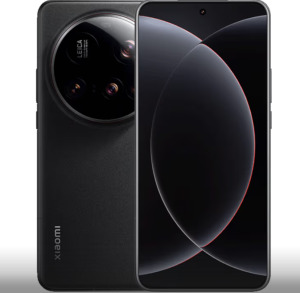
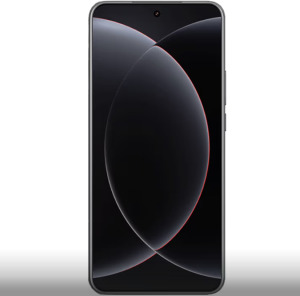
Xiaomi 15 Ultra Specifications
RAM & Storage 16 GB RAM + 512 GB Processor Qualcomm Snapdragon 8 Elite Rear Camera 3 X 50 MP + 200 MP Front Camera 32 MP Battery 5410 mAh Display 6.7 inches (17.09 cm) General Operating System Android v15 OS Updates 4 Years Custom UI HyperOS Performance Chipset Qualcomm Snapdragon 8 Elite CPU Octa core (4.32 GHz, Dual core, Oryon + 3.53 GHz, Hexa Core, Oryon) Architecture 64 bit Fabrication 3 nm Graphics Adreno 830 RAM 16 GB Best in Class ▾ RAM Type LPDDR5X Display Display Type LTPO AMOLED Screen Size 6.73 inches (17.09 cm) Resolution 1440x3200 px (QHD+) Peak Brightness 3200 nits Refresh Rate 120 Hz Aspect Ratio 20:9 Pixel Density 521 ppi Screen to Body Ratio (calculated) 90.03 % Screen Protection Yes Bezel-less display Yes with punch-hole display Touch Screen Yes, Capacitive Touchscreen, Multi-touch HDR 10 / HDR+ support Yes, HDR 10+ Design Height 161.3 mm Compare Size Width 75.3 mm Thickness 9.35 mm Weight 226 gm Build Material Back: Eco Leather, Glass Fiber Water Resistance Yes, Water resistant, IP68, (up to 30 minutes in a depth of 1.5 meter) Ruggedness Dust proof Camera Main Camera Resolution 50 MP Primary Camera,f/1.63, Wide Angle(23 mm focal length, 1/1" sensor size, LYT 900, 1.6µm pixel size)50 MP f/2.2, Ultra-Wide Angle Camera(14 mm focal length, 1/2.76" sensor size, 0.64µm pixel size)50 MP f/1.8, Telephoto Camera(70 mm focal length, 1/2.51" sensor size, 0.7µm pixel size)200 MP f/2.6(100 mm focal length, 1/1.4" sensor size, 0.56µm pixel size) Autofocus Yes OIS Yes Flash Yes, Dual LED Flash Image Resolution 8150 x 6150 Pixels Settings Exposure compensation, ISO control Shooting Modes Continuous Shooting High Dynamic Range mode (HDR) SuperMoon Camera Features Digital Zoom Auto Flash Custom Watermark Filters Touch to focus Video Recording 7680x4320 @ 30 fps 3840x2160 @ 120 fps 1920x1080 @ 1920 fps 1280x720 @ 1920 fps Video Recording Features Dual Video Recording Slo-motion Video Pro Mode Front Camera Resolution 32 MP f/2.0, Wide Angle, Primary Camera(21 mm focal length, 1/3.14" sensor size, 0.7µm pixel size) Flash Yes, Screen flash Video Recording 3840x2160 @ 60 fps 1920x1080 @ 60 fps 1280x720 @ 30 fps Battery Capacity 5410 mAh Wireless Charging Yes Quick Charging Yes, 90W Hyper Charging Storage Internal Memory 512 GB Best in Class Expandable Memory No Storage Type UFS 4.1 USB OTG Yes Network & Connectivity SIM Slot(s) Dual SIM, GSM+GSM SIM Size SIM1: Nano, SIM2: Nano Network Support 5G, 4G VoLTE Yes Wi-Fi Yes, Wi-Fi 7 (802.11 a/b/g/n/ac/be/ax) 5GHz 6GHz Wi-Fi Features Mobile Hotspot Bluetooth Yes, v6.0 GPS Yes with A-GPS, Glonass NFC Yes Multimedia FM Radio No Stereo Speakers Yes Audio Jack USB Type-C Audio Features Dolby Atmos Sensors Fingerprint Sensor Yes Fingerprint Sensor Position On-screen Fingerprint Sensor Type Ultrasonic Other Sensors Light sensor, Proximity sensor, Accelerometer, Barometer, Compass, Gyroscope Read the full article
0 notes
Text
"Unpacking Sony Mobile: Specialties and Innovations in Smartphone Technology"
Sony Mobile, part of the Sony Corporation, is renowned for its unique approach to smartphone design, particularly with the Xperia lineup. Unlike many competitors, Sony leverages its strengths in multimedia technology, photography, and display engineering to deliver a distinct user experience that appeals to enthusiasts of media, photography, and gaming. Here’s a closer look at the core specialties that set Sony Mobile apart.
1. Display Technology
One of Sony’s major strengths is its display technology. Drawing on expertise from its Bravia television line, Sony equips its Xperia phones with some of the most vibrant, detailed screens on the market. Xperia models like the Xperia 1 V feature a 4K OLED display — a rarity among smartphones — that offers true-to-life colors, deep blacks, and high contrast. This display quality is particularly noticeable for video streaming, where Sony’s technologies like Creator Mode and X1 for Mobile allow users to experience content as intended by filmmakers, down to the smallest color details.
Sony also emphasizes the 21:9 aspect ratio in its phones, which is wider and taller than typical smartphone displays. This unique form factor enhances immersion, especially for watching movies in their original cinematic format, and also provides more screen space for multitasking. In many ways, Sony’s Xperia phones provide a more cinematic and productive experience than standard 16:9 or 20:9 displays.
2. Professional Photography and Videography
Sony’s imaging capabilities are another defining feature, powered by its well-regarded Alpha camera series. Xperia smartphones incorporate advanced camera features aimed at both professional photographers and casual users. With features like the Exmor RS sensor, Real-Time Eye AF (autofocus), and advanced manual controls, Sony smartphones are ideal for users looking for DSLR-like photography control. Many Xperia models also support 4K HDR video recording, which is rare among smartphones.
Sony’s photography and videography tools also stand out because of their accessibility to enthusiasts. For example, the Xperia line often includes Photo Pro and Cinema Pro apps, which allow users to manually adjust settings like shutter speed, ISO, white balance, and focus, providing greater creative control. These tools are ideal for users who want to go beyond point-and-shoot photography, as they mimic the experience of using a professional camera.
3. Sound Quality and Audio Features
Audio quality is another area where Sony Mobile excels, drawing on Sony’s expertise with high-resolution audio and consumer electronics. Xperia phones often include support for high-resolution audio formats and feature technologies like DSEE Ultimate, which upscales compressed audio to near high-resolution quality. In addition, Xperia devices frequently support Sony’s 360 Reality Audio and LDAC for high-quality wireless audio, appealing to music enthusiasts who prioritize sound quality.
Sony’s attention to sound extends to its stereo speakers, which are often positioned at the front of the phone to provide a more immersive experience. Some models also retain a 3.5mm headphone jack, a feature that’s increasingly rare in modern smartphones but valued by audiophiles who prefer wired headphones.
4. Gaming Performance and Features
Sony has also focused on mobile gaming, optimizing its Xperia models for enhanced gaming experiences. With powerful Snapdragon processors and Game Enhancer software, Xperia phones allow users to manage performance settings, block notifications, and even record gameplay footage. This focus on gaming aligns with Sony’s PlayStation brand, and Xperia devices are often compatible with PlayStation controllers, offering a console-like gaming experience on mobile.
Conclusion
Sony Mobile’s Xperia lineup is characterized by an emphasis on display quality, professional-grade photography tools, premium audio, and gaming features. While Xperia phones may not be as mainstream as some other brands, they appeal strongly to media professionals, photographers, audiophiles, and gamers who seek a high-quality, immersive experience. By combining Sony’s expertise across various entertainment technologies, Xperia smartphones stand as a distinctive choice for users who value multimedia performance and advanced features.
0 notes